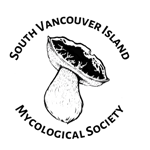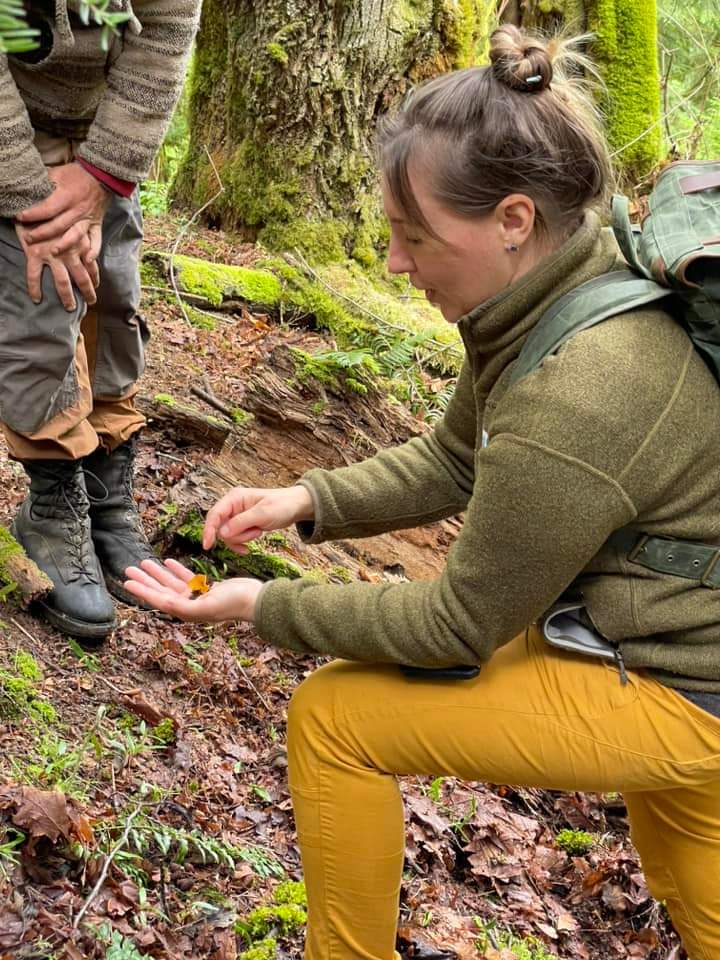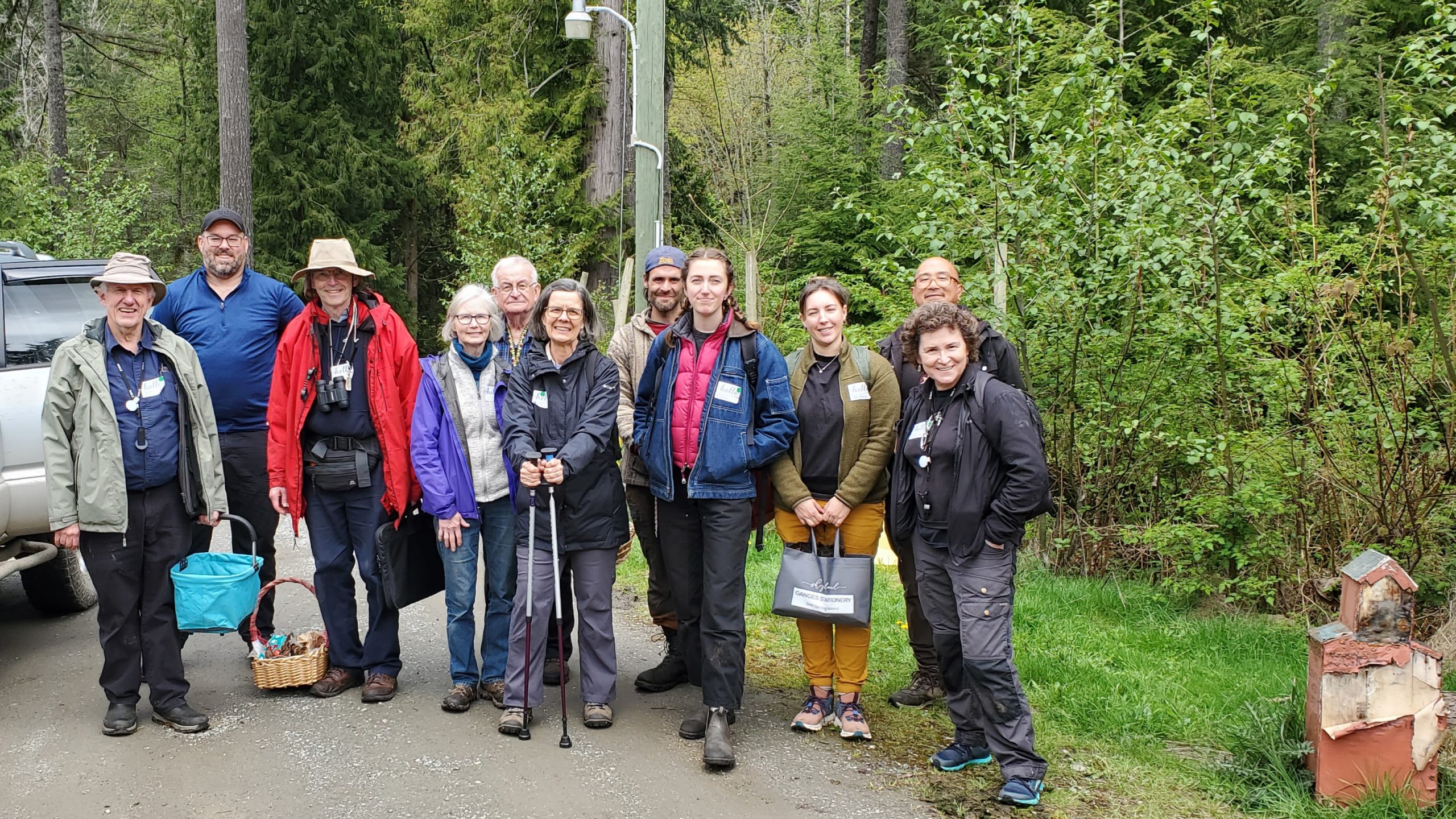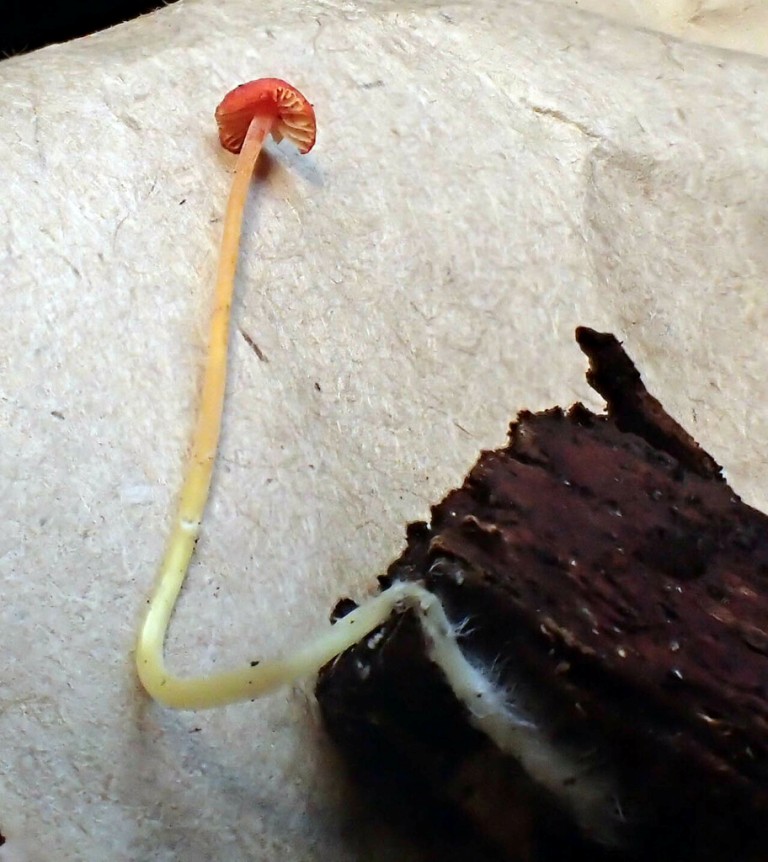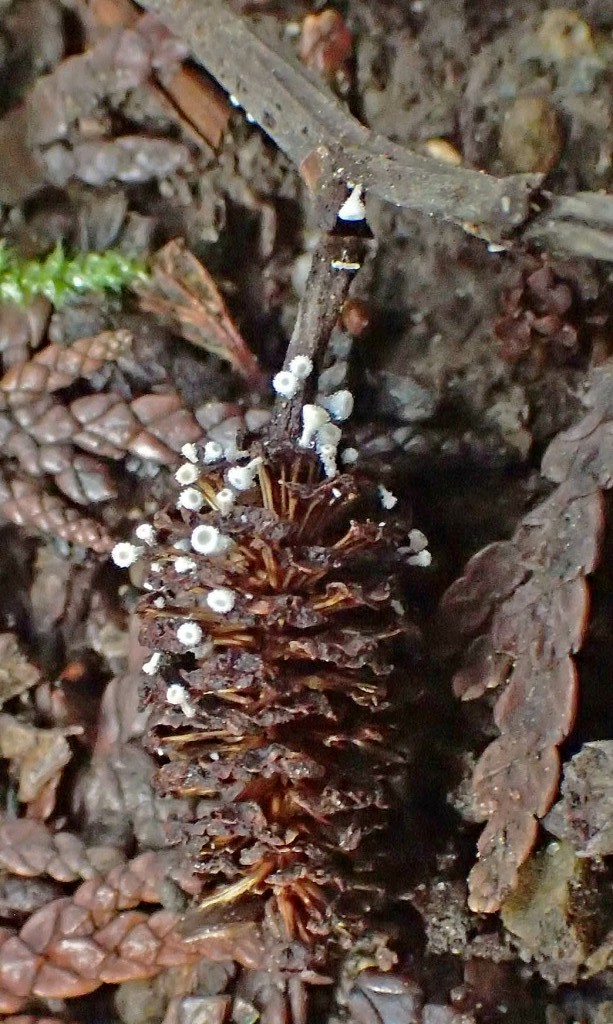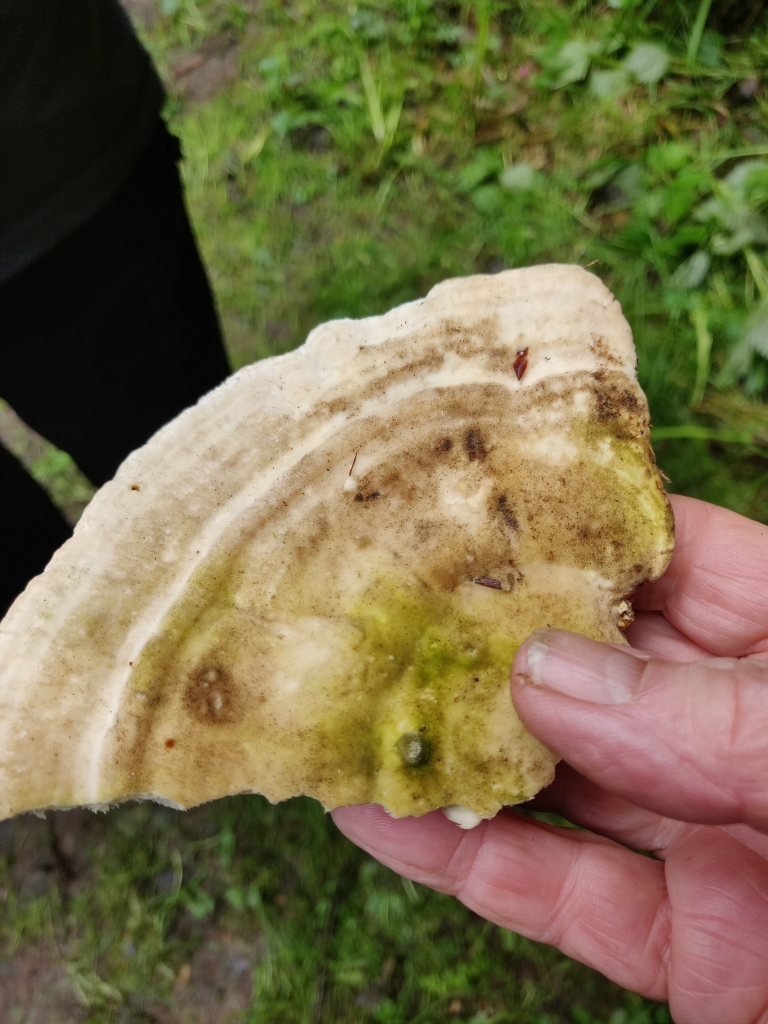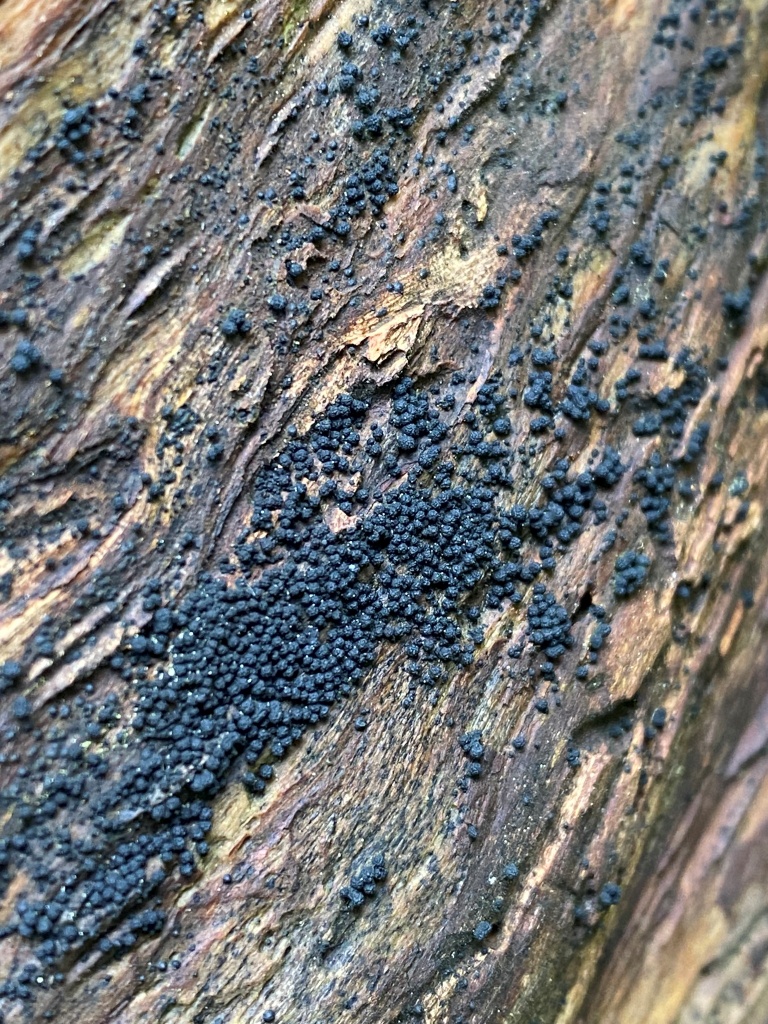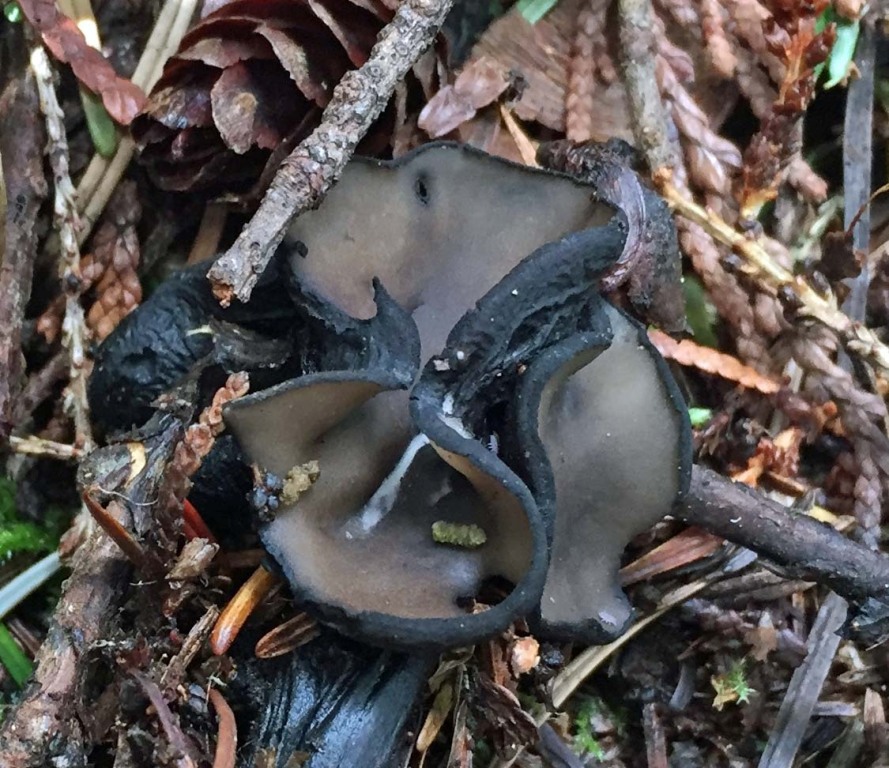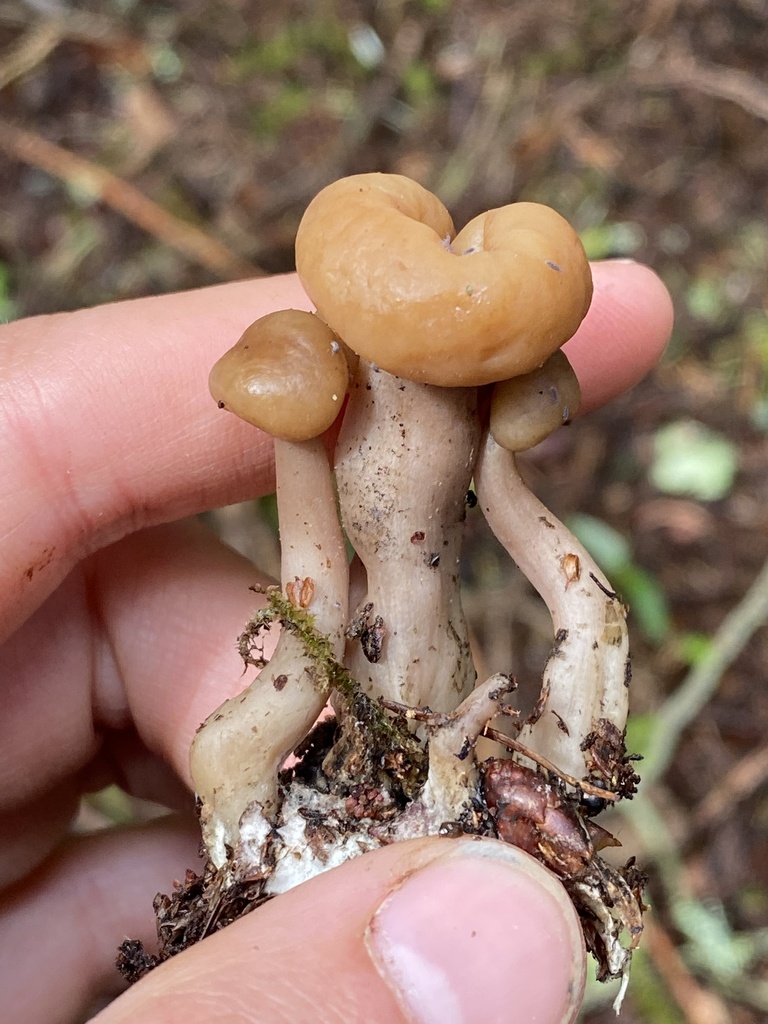On Saturday, May 6, a group of mushroom enthusiasts from Salt Spring (their Facebook page) held a foray and invited several SVIMS people to join them.
A group of seven SVIMS people tried to board the morning Schwatz Bay ferry to Salt Spring–only to find out that the morning ferries had been cancelled. However, they heard that the ferries were running a free pilot boat service to Salt Spring from the neighbouring Government Wharf. Making their way to the small dock, the small group were all able to fit into the 9:00 am run of the pilot boat and arrive in time for the foray.
Top photo by Mel Hesz, bottom photo by David Walde.
The group of SVIMS people and Salt Springers surveyed a second-growth forest on Cranberry Road. Thanks in part to the recent rains, there were lots of mushrooms to see. About 40 species were logged on iNaturalist. Some of the more interesting finds are described below. (Click on the pictures to see the iNaturalist entries.)
Lachnum virgineum, the hairy fairy cup. Thanks to Ian Gibson for this great stacked closeup photo.
Presumably the mushroom is called “virgineum,” virgin, because it is white, and virgins wore white at weddings. Except the theory doesn’t hold water. The mushroom was first named “virgeneum” in the late 1700s, and brides didn’t start wearing white until Queen Victoria popularized the tradition in the 1830s.
Cudonia circinans has the funny common name “redleg jellybelly.” Reviewing their records, SVIMS members established in 2022 that this was a spring as well as a fall mushroom. It’s truly a club–nothing under the head but bald tissue. This asco club, by the way, has crazy-long ascospores. See the Kuo writeup on this species for a picture of the ascospores.
